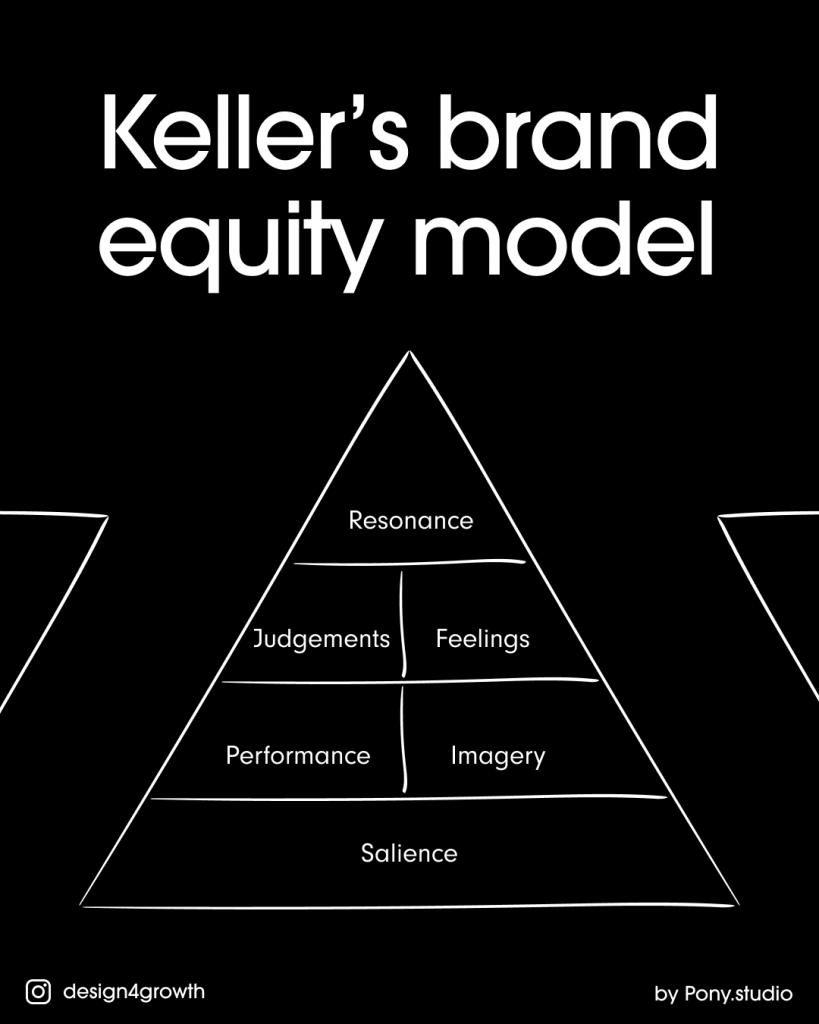Design
12 min read
How to Measure Your Brand Equity
Let’s get something out of the way – you can’t build positive brand equity with a product or service that doesn’t meet your customer’s expectations. People don’t love Apple, Nike, or Nespresso simply because they love their branding. They love these brands because they love their products first and the company has consistently been meeting their expectations for quality. The product/service and brand promise, combined with a strong brand personality and tone of voice are the fundamentals of positive brand equity.
The reason more and more startups started investing in branding is that strong brand identity has become one of the main differentiators for many companies operating in an overcrowded industry. The primary use of your brand is to remove the anxiety in the consumer in making their choice, to increase their trust, and ultimately increase business by creating positive brand equity.
What is brand equity?
To start, we must define what brand equity is and why it matters.
Brand equity is the commercial value of your brand or the consumer perception of it, that’s not directly related to your product or services. Positive brand equity is the “premium” the consumer is ready to pay for your product or service just because it comes from your brand. Brand equity is the reason why you buy an iPhone instead of a cheaper alternative.
The total brand value and brand strength is a combination of brand awareness and brand associations, including beliefs and feelings held by buyers about the brand. Marketers are interested in measuring brand equity since it provides an overall view of their brands’ strength in customers’ minds compared to competitors’ brands.
Think about Coca-Cola vs Pepsi. Even though they are very similar in taste, there are still consumers who would choose one over the other based on preference alone, more related to the brand rather than the actual drink.
Why brand equity matters
When brand equity is calculated, it can be used to determine the brand’s value. The brand’s value includes tangible measures such as price premiums attached to the brand and brand financial resources. It also includes intangible measures – think product satisfaction – and how much people are willing to pay for a brand or what they are willing to do in support of it. These intangible measures make up the bulk of a brand’s overall value because they lead to more loyal customers who are less likely to be influenced by competitors.
Positive brand equity directly impacts your profit margins as a business simply because it allows you to charge more for the same product, thanks to the strength of your brand. The brand’s success can be directly attributed to customers’ attitudes towards that brand. The customer experience influences their relationship with your brand. Therefore, it affects how much money they’ll spend on your product or service over time because of their connection with the brand.
To better understand the term brand equity, let us assume we have two firms: Company A and Company B. Both companies offer very similar products and services on a day-to-day basis.
Let’s further assume that Company A has been around since the beginning of time but brand equity is almost non-existent for them. In contrast, Company B started a year ago but they have brand awareness levels in most countries they operate in at close to 80 percent, thanks to a number of factors, such as viral marketing campaigns, distinctive tone of voice, clear messaging etc.
Which company would you rather do business with? Chances are, given this information, that your decision is going to be swayed towards the more popular company – Company B.
Brand Equity Models
The brand equity model is a strategic brand management tool that has been used by organisations to measure their brand’s value.
There’re a few popular brand equity models, but the most widely spread one is the Keller Model, firstly developed by Professor of Marketing Kevin Lane Keller and published in his book “Strategic Brand Management”. It’s also known as the Customer-Based Brand Equity (CBBE) Model. The concept behind it is simple – to increase your brand equity you first need to influence the consumer’s perception of it and own the narrative. It’s usually visualised as a pyramid.

At the bottom, we have “Salience”, or brand awareness – before everything else you have to make sure that you have developed your brand fundamentals – personality, tone of voice, value, etc and you can successfully communicate them. That’s why having a strong brand identity is the first step of the process to achieving positive brand equity.
Second comes the “Performance” – define the experiences that your customers have with your brand as a direct result of your product’s performance. You can’t build a strong brand with a sh**y product.
Then we have the “Judgement” and “Feelings” – how does the brand make the consumer feel, what emotions does it evoke, what do they say about their experience with the brand.
At the top, it’s brand “Resonance”. It’s the most difficult level to reach because it involves the consumer choosing your brand without your direct influence. You have achieved brand resonance when your customers feel a deep, psychological bond with your brand – they purchase your product regularly, have a sense of community, choose your brand over new, more attractive options.
The number one goal for marketers is to build long-lasting relationships with their customers while gaining their trust through superior design, service, and communication. These attributes are what influence consumers to buy products or services.
How to measure brand equity
Brand equity, as we’ve discussed previously, is made up of two parts: brand awareness and brand loyalty. The better your brand recognition or brand loyalty is, the higher your brand equity will be. Your brand asset value will be based on your brand name, logo, tagline, and any other brand assets you have in your company.
Measurement of brand equity is complicated because it’s hard to measure brand loyalty especially when you look at certain products that consumers buy frequently. The brand loyalty factor can only be measured indirectly, which makes measuring brand equity more challenging than the other factors marketers use to determine their brand identity, such as market share, prices, etc.
Traditionally, there are six ways to measure brand equity:
1) Brand linkage: This principle implies that customers know your brand name even though it may not appear in advertising or promotions directly. A brand linkage study is a research technique used to measure brand awareness in surveys or interviews. The brand linkage principle measures brand awareness at the top of the brand equity model, which is brand loyalty.
2) Brand association: This principle means that your brand reminds consumers of a specific product. For example, Subway Restaurants’ brand associations are a good meal and a healthy lifestyle choice because they have commercials with athletes who eat their sandwiches so they can be healthier and perform better. Remember when Michael Jordan endorsed Gatorade? Gatorade’s brand association was workouts and sports activities because it was so closely tied with an active person in sports.
3) Idealised positioning: This principle shows that your brand delivers what people want from products or services. One brand that has strong brand equity is Dove. Dove brand associations are feeling beautiful, loving your hair or skin, and feeling comfortable with how you look. This is an example of idealised positioning because the brand delivers what women want by offering beauty products made with natural ingredients that care for their skin and body instead of just covering up imperfections.
4) Credibility: This principle tells consumers that your brand can be trusted to provide quality products or services. For instance, Nike’s brand credibility is its association with professional athletes who wear their shoes when they compete in sports events around the world including the Olympics. Nike brand associations are hard work and performing well which make people believe their product will give them a competitive edge over other less expensive alternatives on the market.
5) Differentiation: This principle focuses on brand identity and how consumers perceive your brand in comparison to the competition. For example, Starbucks differentiation is their brand loyalty program, music played throughout their cafes, and even the way baristas make a person’s drink which creates a positive brand experience for customers while they wait. As a result, people believe that Starbucks brand associations are buying local coffee while spending time with friends or family at their cafe while enjoying a nice cup of coffee.
6) Resonance: The brand associations created by this principle show consumers how your brand reflects what you stand for as a company. Dove’s resonant brand association is natural beauty because every advertisement has women who appear less than perfect but share their stories about real beauty. Dove brand associations are positive brand experiences and self-esteem for women who feel good about themselves, which is what the brand stands for as a company.
How to measure brand equity if you’re a startup
Quantitative research methods are not suitable for young startups that are just starting to build their brand, as you simply don’t have enough audience to do this correctly. However, if you have invested in building your brand identity, you should start measure what’s the impact of it sooner, rather than later.
How brand identity and brand performance affect brand equity is through brand associations, brand knowledge, brand acceptance, brand awareness, and brand trust. These factors reflect how consumers view your brand which in turn influences their purchase decisions either positively or negatively based on their emotions towards the product or service you offer.
The best methods you could use are: focus groups with users, 1:1 customer interviews and online surveys. The aim is to understand the customer perception of your brand (not product) and how much it matters to them. Below are some questions you can use in your interviews and surveys to help you gather this information:
- When you think of X product type, which brand/s come to mind?
- When did you first hear about our brand?
- When you think of our brand, what comes to mind?
- Can you recall our primary colours?
- What are the top 3 reasons why you choose our brand over other similar solutions?
- Would it matter to you if tomorrow we’re called “Y”?
To learn more about how you can build your Brand Identity, the first of creating positive brand equity, check out The Ultimate Branding Process























